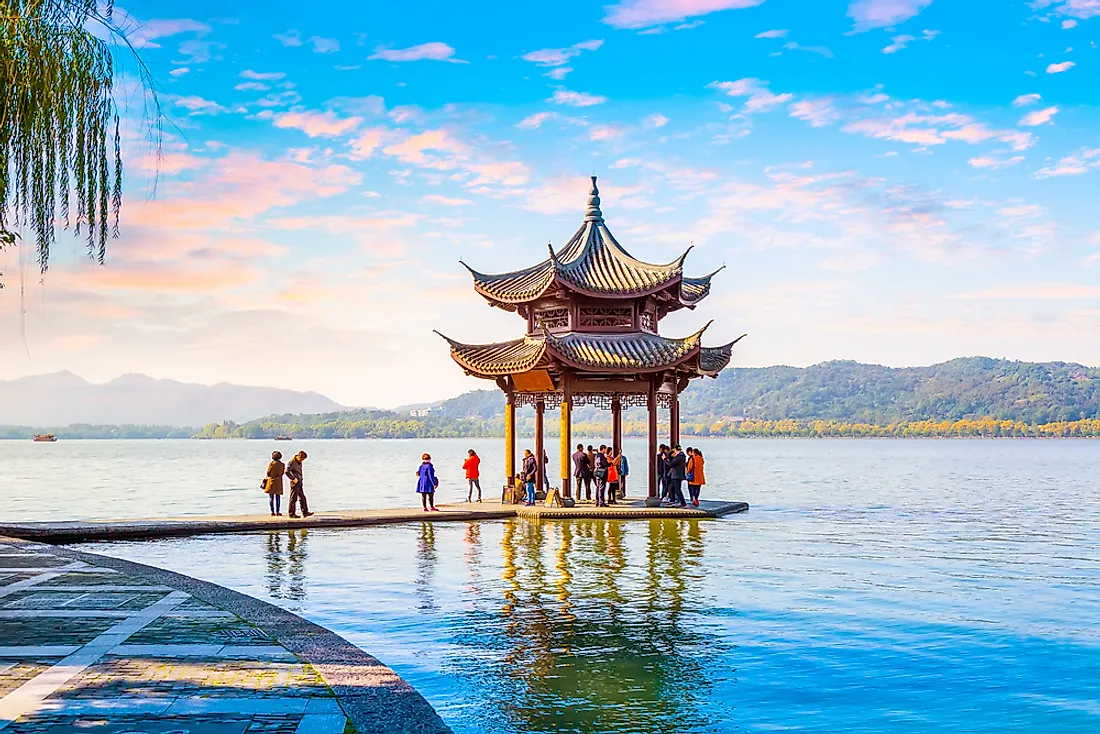Hangzhou – The Capital Of Zhejiang Province

Zhejiang is a province in eastern China. The province is located on the coast of the East China Sea and borders five other Chinese provinces: Jiangxi (west), Fujian (south), Anhui (northwest), Shanghai (north), and Jiangsu (north). Zhejiang occupies an area of 39,300 sq mi and has a population of 57,370,000, ranking as China's 26th most extensive and 10th most populous province. Additionally, the province has a population density of approximately 1,500 individuals per square mile, which is the eighth highest in China. Zhejiang is subdivided into 11 prefecture-level divisions, the most extensive of which is Lishui.
Capital of Zhejiang
Hangzhou is the capital and most populous city of China's Zhejiang Province. The city occupies an area of 6,408 sq mi and has a population of more than 9,806,000. Hangzhou is situated at the head of Hangzhou Bay, which separates Ningbo and Shanghai. The city developed as the southern terminus of the Grand Canal and has been one of the most prosperous and renowned cities in China during the last millennium. Additionally, the Globalization and World Cities Research Network (GaWC) classifies Hangzhou as a World City with a "Beta+" status. In September 2015, Hangzhou was awarded the 2022 Asian Games and will become the third Chinese city to host the games. The city is also considered to be an emerging technology hub and is home to e-commerce giant Alibaba. Hangzhou is subdivided into two counties, one county-level city, and ten districts.
History of Hangzhou
Hangzhou is one of the Seven Ancient Capitals of China and became the seat of the prefecture of Hang in 589 AD. The city later took on the name of the area it administered and was renamed Hangzhou. It served as the first capital of the Wuyue Kingdom from 907 until 978, during which time it was known as Xifu, and was one of South China’s great cultural bastions, along with Chengdu and Nanjing. Hangzhou was a crucial port city until its harbors became filled with silt during the Ming dynasty. The Republic of China ruled the city under the Kuomintang, also referred to as the Nationalist Party of China (NPC), from 1927-1937 and 1945-1949. The People’s Liberation Army gained control of the city on May 3, 1949. Hangzhou is currently one of the most prosperous cities in China.
Geography and Climate
Hangzhou is located in northwestern Zhejiang, near the southern end of the Grand Canal, which links the Yangtze and Yellow rivers. Hangzhou’s administrative region stretches from the coastal plains of Hangzhou Bay to the mountainous region of Anhui Province. The city center was constructed around the northern and eastern parts of West Lake. Hangzhou experiences a humid subtropical climate and has four distinctive seasons that are characterized by dry, chilly and cloudy winters, as well as long, hot, and humid summers.
Economy of Hangzhou
Hangzhou is an industrial city with sectors that include textiles, agriculture, and light industry. Additionally, the city's financial sector has experienced substantial growth in recent years. The city was added to the Global Financial Centers Index (GFCI) for the first time in 2018, ranking 89th. Hangzhou’s gross domestic product (GDP) per capita increased from US$3,020 in 2001 to US$21,184 in 2018. The city has also developed numerous new industries including food processing, electronics, automotive components, medicine, and telecommunications.
Demographics of Hangzhou
Hangzhou experienced a population growth of 4.8% per year from 2000 to 2010, when it had an estimated population of 5,162,039. The population of its metropolitan region was estimated at 13.4 million in 2010 by the Organization for Economic-Co-operative and Development (OECD). The Hangzhou metropolitan area, which includes Huzhou, Jiaxing, and Shaoxing, is the fourth largest in China.











